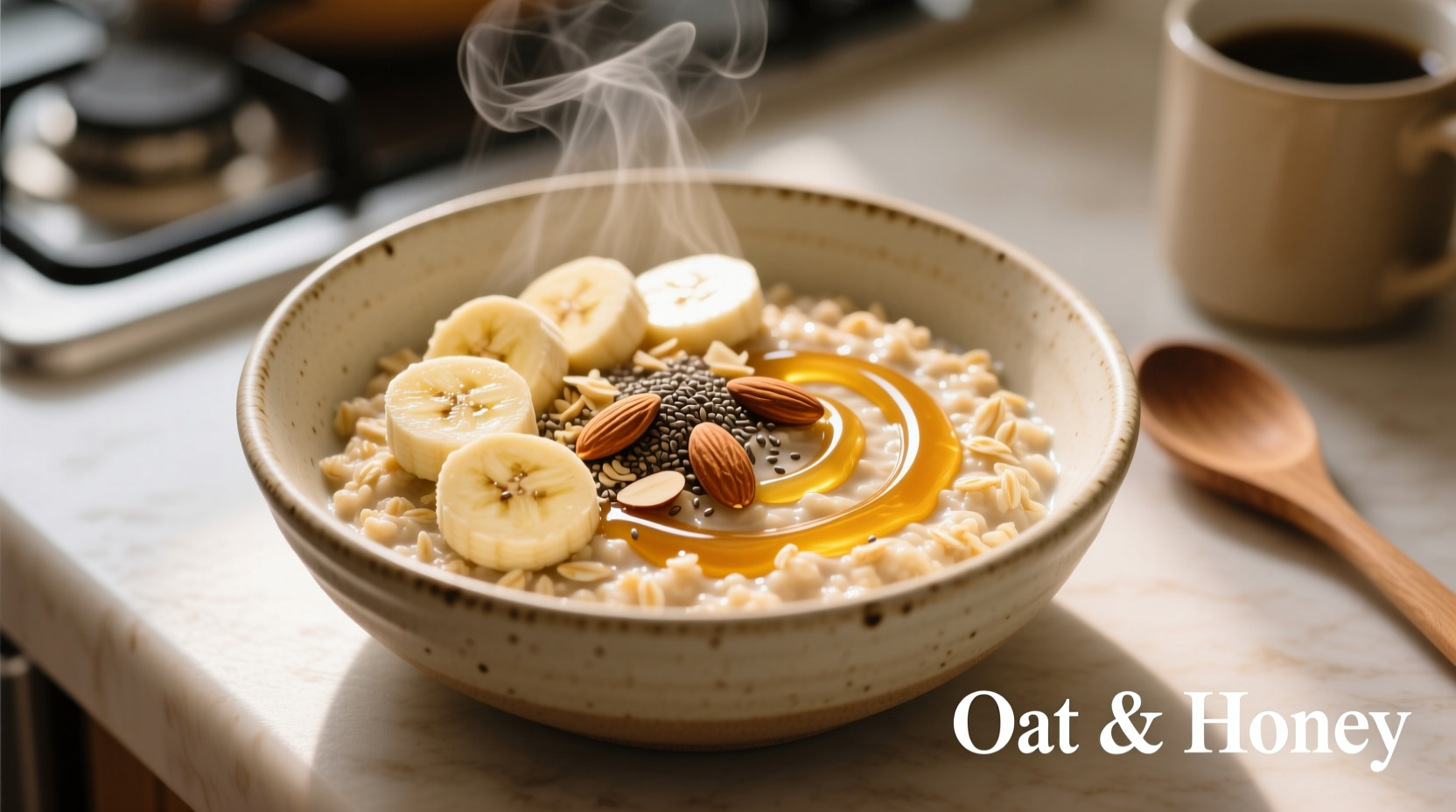For perfect microwave oatmeal, combine 1/2 cup rolled oats with 1 cup liquid (water or milk) and a pinch of salt in a large microwave-safe bowl. Microwave on high for 2-3 minutes, stirring once halfway through. Let stand for 1 minute before adding your favorite toppings. This foolproof method prevents boil-overs while delivering creamy, restaurant-quality results in under 5 minutes.
The Foolproof Microwave Oatmeal Method Everyone Should Know
Starting your day with homemade oatmeal shouldn't require standing over a stove. Microwave oatmeal preparation has evolved from a messy kitchen experiment to a precision cooking technique that delivers consistent results. As a busy professional or student, you need breakfast solutions that work with your schedule—not against it. This guide reveals the exact method professional chefs use for perfect microwave oatmeal every time, eliminating guesswork and preventing those dreaded overflow disasters.
Why Your Previous Attempts Failed (And How to Fix Them)
Most microwave oatmeal disasters happen because of three critical mistakes: using the wrong bowl size, selecting inappropriate oats, and improper liquid ratios. The USDA's Dietary Guidelines for Americans confirms that properly prepared oatmeal provides sustained energy release and essential nutrients, but only when cooked correctly. When oats aren't given enough space to expand or when liquid ratios are off, you end up with either dry, chewy oats or a microwave explosion.
| Oat Type | Liquid Ratio | Microwave Time | Best For |
|---|---|---|---|
| Rolled oats | 1:2 (oats:liquid) | 2-3 minutes | Daily breakfast |
| Quick oats | 1:1.75 | 1.5-2 minutes | Emergency meals |
| Steel-cut oats | 1:3 | 6-8 minutes | Weekend brunch |
The 4-Step Microwave Oatmeal Protocol
Step 1: Select Your Vessel Wisely
Choose a microwave-safe bowl that's at least four times larger than your oat mixture. Ceramic or glass works best—never use metal. The FDA recommends avoiding containers not labeled microwave-safe as they may leach chemicals into food. This extra space prevents boil-overs while allowing oats to expand properly during cooking.
Step 2: Perfect Your Ratio
For creamiest results, use a 1:2 ratio of rolled oats to liquid (water, milk, or plant-based alternatives). Add a pinch of salt before cooking—this enhances flavor without making it taste salty. The Academy of Nutrition and Dietetics confirms that proper liquid ratios maximize beta-glucan release, the compound responsible for oatmeal's cholesterol-lowering benefits.

Step 3: Master the Cooking Process
Microwave on high for 2 minutes, then pause to stir thoroughly. This critical step redistributes heat and prevents hot spots. Continue microwaving for another 1-2 minutes depending on your microwave's wattage. Let the oatmeal stand covered for 1 minute after cooking—this allows residual heat to finish the process without overcooking.
Step 4: Customize Without Compromising Texture
Add sweeteners and mix-ins after cooking to maintain ideal texture. Stir in nut butter for creaminess, fresh fruit for natural sweetness, or spices like cinnamon for flavor complexity. The American Heart Association recommends limiting added sugars to no more than 25g daily, making natural toppings the healthiest choice.
Avoiding Common Microwave Oatmeal Scenarios
Microwave oatmeal works perfectly for quick breakfasts but has specific limitations. According to food safety experts at the USDA Food Safety and Inspection Service, never attempt to cook large batches (more than 1 cup dry oats) in a single microwave session—this creates uneven heating and potential food safety risks. Additionally, microwave cooking isn't suitable when you need steel-cut oats with traditional chewiness, as the texture development requires longer stovetop simmering.
Advanced Techniques for Perfect Results Every Time
For restaurant-quality texture, try the "soak method": combine oats and liquid, then let sit for 5 minutes before microwaving. This allows initial hydration, resulting in more even cooking. When using milk, reduce power to 70% to prevent scorching. For meal prep enthusiasts, cook multiple single-serving portions and freeze them—simply add 30 seconds to reheating time.
Nutritional Benefits of Properly Prepared Oatmeal
When cooked correctly, oatmeal delivers impressive nutritional benefits. A standard serving provides 4g of fiber, 6g of protein, and essential minerals like manganese and phosphorus. The cooking method affects nutrient availability—microwave cooking preserves more water-soluble vitamins than extended stovetop boiling. For optimal heart health benefits, pair your oatmeal with antioxidant-rich toppings like berries.
Troubleshooting Your Microwave Oatmeal
If your oatmeal consistently turns out too dry, increase liquid by 2 tablespoons next time. For runny results, reduce liquid slightly or extend standing time. If you experience frequent boil-overs, your bowl is too small or you're overfilling it—always leave at least 2 inches of space at the top. For uneven texture, ensure you're stirring thoroughly at the halfway point.











 浙公网安备
33010002000092号
浙公网安备
33010002000092号 浙B2-20120091-4
浙B2-20120091-4